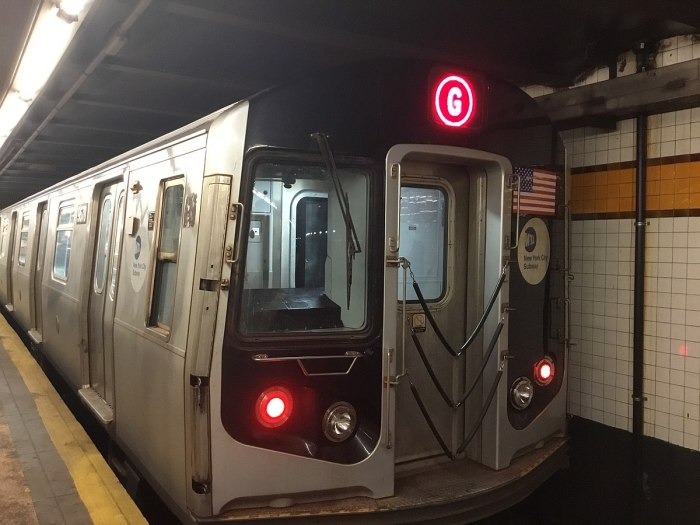One thing is certain: City Council Speaker Corey Johnson’s detailed, 104-page plan outlining city control for the subway and buses, which he unveiled Tuesday afternoon, is reverberating far and wide.
Even to Vatican City, where Transport Workers Union president John Samuelsen was attending a summit on fairness in access to transportation hosted by the Pontifical Academy of Sciences.
Reached by amExpress, it didn’t take long for the union chief to bring his head back from the papacy to MTA politics.
He thought that clear ownership of the system and more funding would be good, but mayors would be unlikely to actually want control: “It’s the biggest ball and chain that the world’s ever seen.”
But that’s what Johnson wants to take on.
“I’m here because I love the subway," he said in his first State of the City speech at LaGuardia Community College. The speech, which felt almost like a mayoral campaign stop, also featured a prop subway entrance and Johnson shouting out all the things that make NYC great, from two Koreatowns to Spike Lee.
What he’s proposing is massive: getting the city’s hands on key pieces of the MTA, an archdiocese-sized state-controlled institution. Johnson also wants the state to allow the city to tax itself more freely, and he wants the city’s new transit system to receive various funding streams both current and proposed.
It would be tentatively called BAT: Big Apple Transit.
Then there were the changes to the way the transit authority would do construction, and little local things like breaking the “car culture” in NYC and adding at least 50 miles of real protected bike lanes per year, not an easy feat when many neighborhoods have stood athwart their progress.
Some transit experts applauded Johnson’s boldness. “It’s a very solid and rigorous plan,” said Ben Kabak, editor of Second Ave. Sagas, a noted transit site.
But there are lots of obstacles to change. Gov. Andrew Cuomo and Mayor Bill de Blasio don’t seem eager to take Johnson up on his offer. They only came together last week with their own plan to fix the subways, which included organizational reforms and congestion pricing, an initiative which would toll entry to parts of Manhattan to raise money for transit and reduce traffic. But their plan was less ambitious about a new MTA structure, which would include tweaks to the current governing board and another level of scrutiny on capital projects.
It’s unclear whether the State Legislature would embrace city control either. Johnson’s plan separates city transit operations and key funding streams from the Long Island Rail Road and Metro-North Railroad, which might spook suburban legislators who are already lukewarm on lesser commitments to NYC.
Then there’s concern (or glee) about how well the city would run the subways, given difficulties with other intractable organizations like the New York City Housing Authority.
In Rome, Samuelsen seemed to look forward to negotiating contracts with de Blasio, who he called a “weakling.”
“We would steamroll him,” added Samuelsen, whose union which includes subway operators and maintenance workers has boosted Cuomo, a sometime-de Blasio foe. For his part, Johnson’s labor approach is counting on health care savings or other negotiation-table reforms.
Welcome to earthly transportation politics. At Samuelsen’s conference, a pamphlet claimed earnestly that the transportation industry could help find solutions to climate change or increase “the human dignity of each man and woman.”
It may take the highest of powers to fix the MTA. Luckily, Samuelsen says his trip to Rome includes an audience with the pope.
































